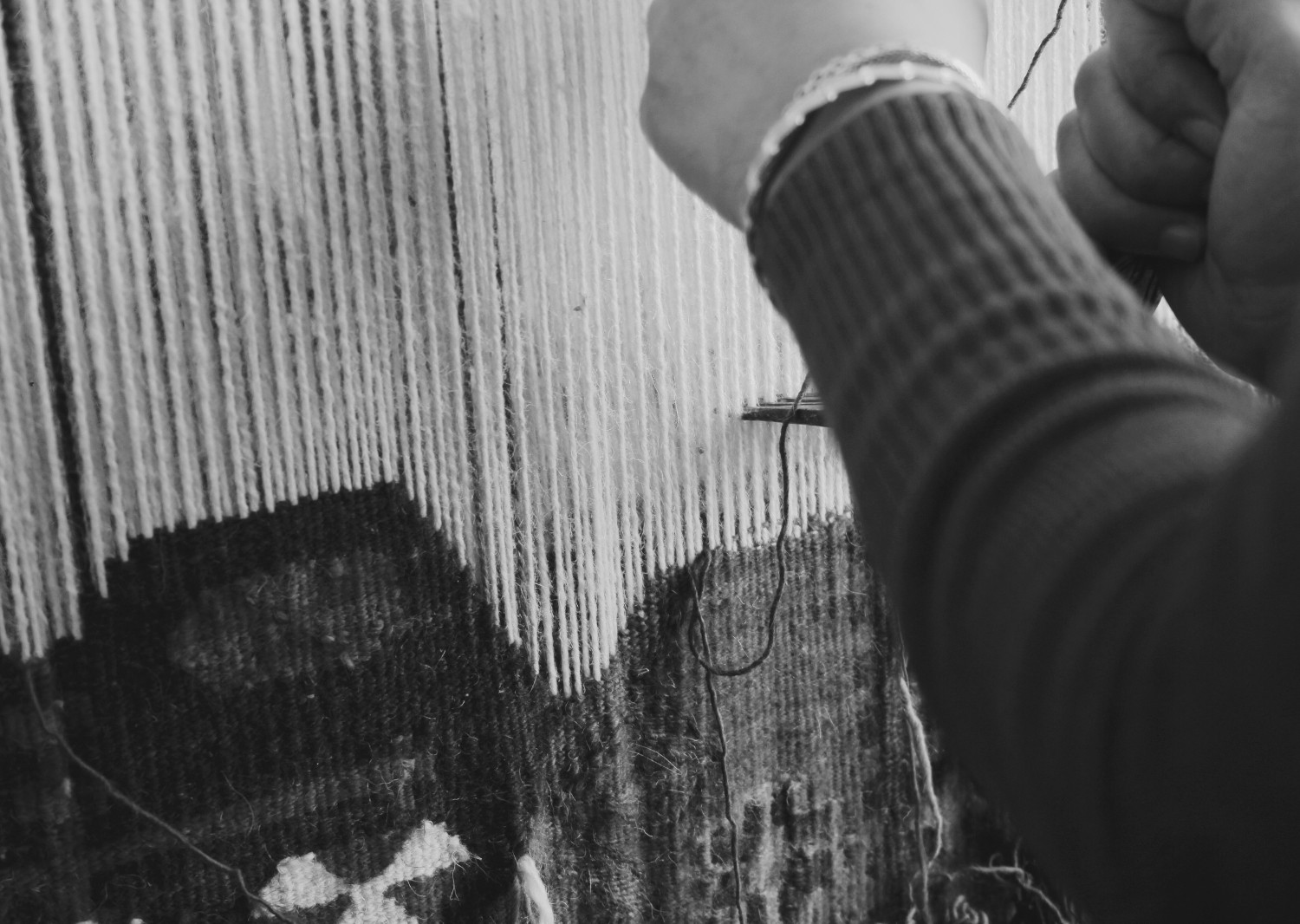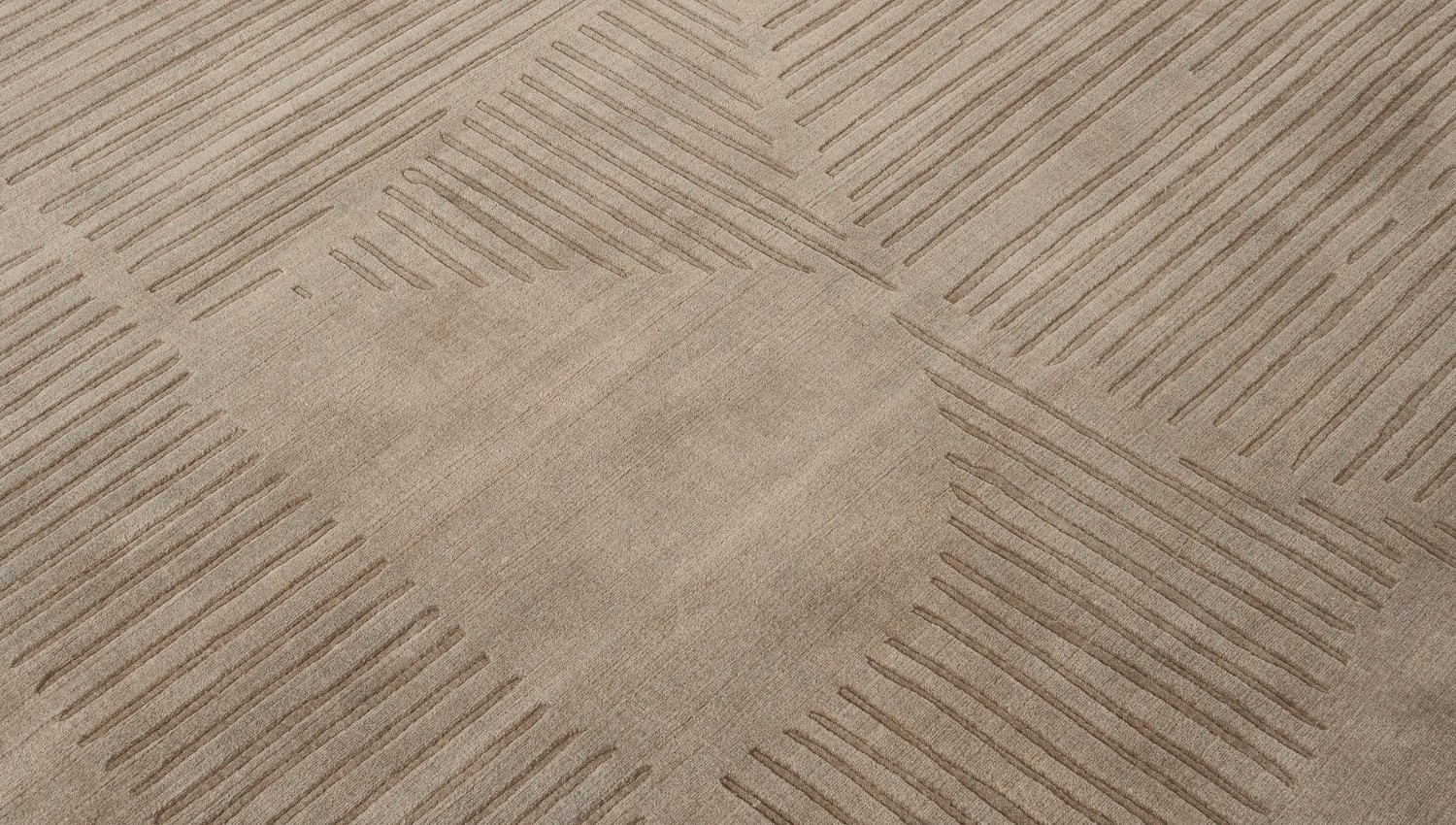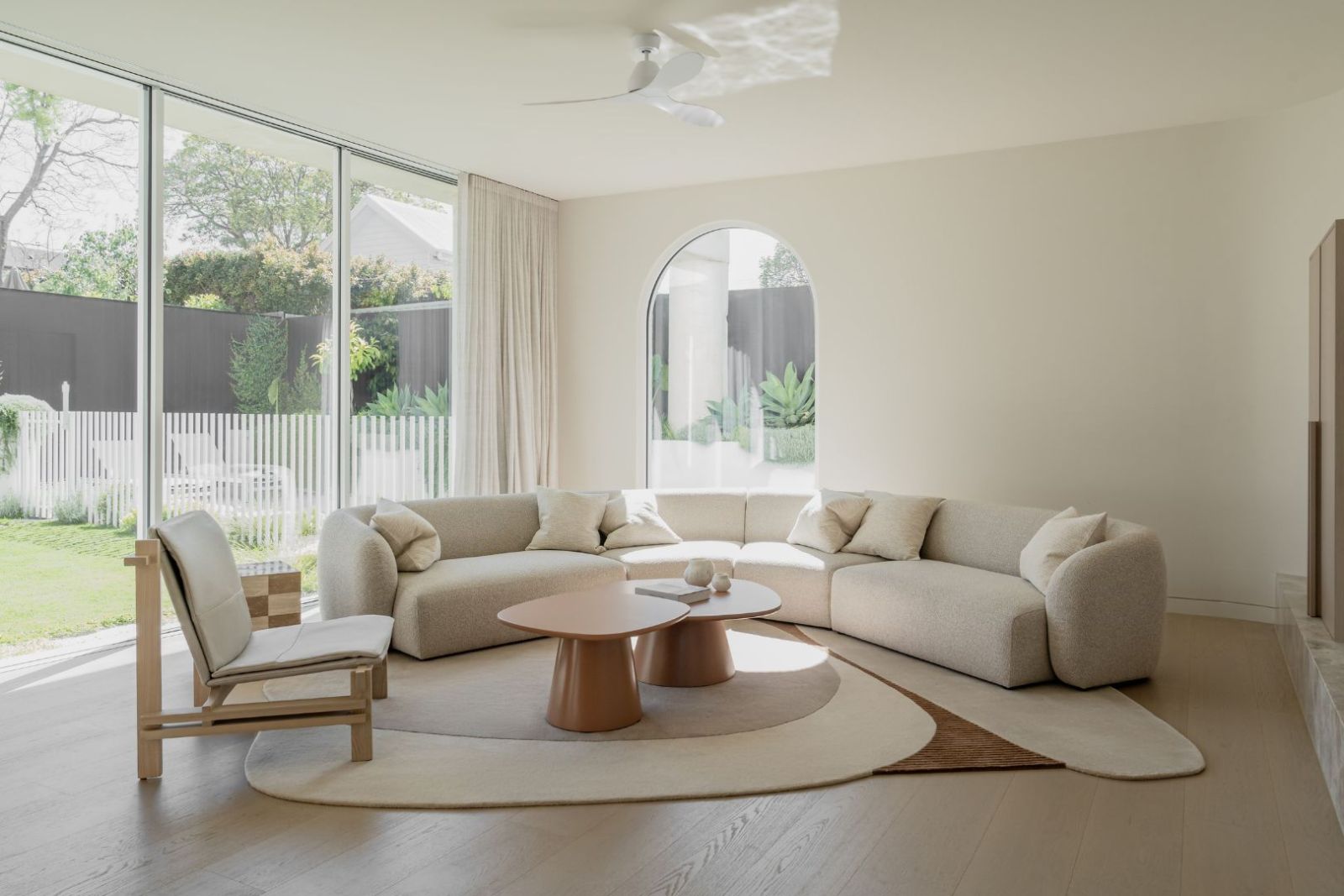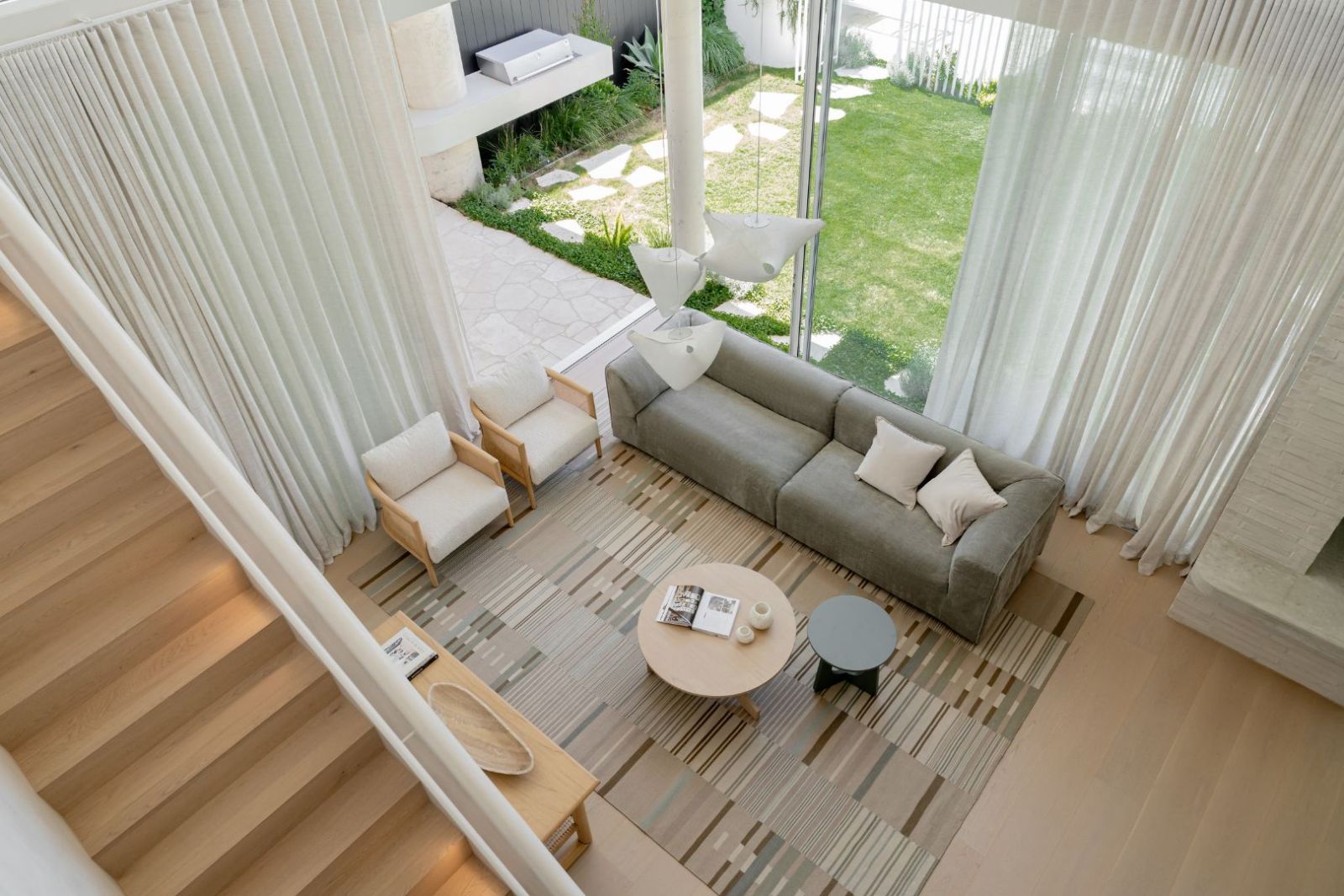Our rugs are completely handmade - masterfully woven, knotted or loomed by the careful hands of our artisans using techniques passed down over centuries by a lineage of rug makers in the heartland of hand-made rugs, Bhadohi. To bring a rug to life is a true labor of love, one born of many stages, each requiring great skill, care and attention to detail.
We continue to represent this rich artisanal heritage by preserving time honoured traditional methods whilst also integrating modern design expertise. This collaborative approach intrinsically places style, quality and durability at the core of each rug, making an investment for your home that is truly crafted for life.
.jpg)
.jpg)
.jpg)
.jpg)

Our rugs are completely handmade - masterfully woven, knotted or loomed by the careful hands of our artisans using techniques passed down over centuries by a lineage of rug makers in the heartland of hand-made rugs, Bhadohi.
Blending generations of craftsmanship with today's design sensibilities, each rug is built to last and is a timeless investment that brings enduring style and comfort into your home.
Composition
New Zealand wool A luxurious renewable natural fibre, it is renowned for its brightness and possesses outstanding natural stain resistant qualities. We use only the finest New Zealand wools available.
The Making of a Rug
Our yarns are carefully dyed by hand using traditional methods and colour blends passed down through generations. After dyeing, they are gently washed, stretched over long wooden poles, and dried naturally in the sun. This thoughtful process brings out the yarn’s rich colour and beautiful texture.
From raw fibre to finished thread, the process of hand spinning is full of care and tradition. Fibres like wool, silk, alpaca, mohair, and flax are gently twisted into continuous strands using a spinning wheel or a drop spindle. Each thread is shaped by hand — spun thick or fine, plied for strength or left soft and airy. Afterwards, it can be dyed in rich colours or left in its natural state, ready for weaving
The weaving process then starts by setting up a frame, where cotton threads, called warps, are stretched vertically across the loom. Using skilled knotting techniques such as the Turkish, Persian, or Tibetan knot, the weaver ties the yarn by hand, knot by knot, to gradually create the pattern.
The rug is gently washed to remove loose fibres and allow for slight shrinkage, tightening the weave for added durability. Soapy water is applied with wooden paddles, followed by a rinse with fresh water. It’s then stitched onto a frame to dry in the sun, which helps retain its shape and highlight the beauty of the fibres.
The finishing process is where the rug truly comes to life, with techniques like adjusting pile heights and carving to accentuate the design. This intricate step involves 18 detailed processes, such as burning, stretching, and shrinking, each adding to the rug’s uniqueness. The effort put into this stage is immense, making each rug truly one of a kind.
Each rug undergoes a thorough quality check before being carefully labelled to ensure it meets our high standards. After being tightly rolled, it’s readied for its journey from our mills to our showrooms, and finally, to its new home — yours. By the time it reaches you, it will have passed through the expert hands of up to 100 skilled artisans.
Weaving Technique


A hand-tufted rug is a fairly modern style of making hand made rugs. Firstly, the wool is dyed and the design is hand-drawn & transferred to the mesh backing. Tufts are created by pushing yarn through the mesh backing.
Hand-tufted rug artisans use a tool called a 'hand-tufter' which holds the yarn and pushes through the mesh backing, which is stretched and placed on a frame. It requires a high level of craftsmanship to efficiently and accurately portray the intricate designs.
A craftsman will use a latex glue to hold the 'tufts' in place, which is then covered by a final cloth backing to protect your floor. The final steps involve washing, drying, shearing & hand carving the
tops of the tufts to create the finished rug. The height of the pile is determined by how much yarn is cut off, and how far the initial yarn was pushed through. The tufting method creates a highly durable and beautifully accurate handmade rug that will endure foot traffic for years to come.
.jpg)
Cleaning and Maintenance
With proper care, our rugs are made to last for years. Below are our cleaning and maintenance guidelines. Please note, no warranty is expressed or implied.
Vacuum or sweep your rug weekly to keep it clean and maintain the pile.
Avoid using high suction settings on wool rugs, as this may loosen the yarn.
For deep cleaning, we recommend consulting a professional.
If you need further advice, please feel free to contact us.
Using an underlay like Underluxe™ will make a difference to how your rug looks, feels and performs over time. Underlay helps keep the rug locked in place, which means a safer environment, stops the rug shuffling phenomenon, helps to reduce fibre shedding due to reduced movement and most importantly makes the rug feel softer underfoot. The added bonus of underlay is that it prevents dirt particles reaching a precious timber subfloor and becoming abrasive.
If interested in purchasing, please enquire.

Care and Maintenance
Vacuuming
Vacuum regularly, but not frequently. We advise against using aggressive vacuum cleaners with rotating brush heads, as this will overly stimulate the loose yarn and cause excess shedding.
Rug Rotation
Periodically rotate your rug every six months to alter the traffic pattern on your rug's surface. This will also help with preventing timber floors from having uneven discolouration.
Rug Protection Options
Some rugs may benefit from a fibre protection application that helps minimise absorbency and protects your rug from stains, mould and sun fade. Trusted by Interior Designers and endorsed by brands like Weave and Warwick Fabrics, Fibre Protector is a recommended investment to maintain the beauty and longevity of Satara rugs.
Key Benefits of Fibre Protector:
Cleaning
Spills
Untreated spills will attract dirt so always carefully blot the spill with a clean, absorbent white cloth straightaway. The cloth should be replaced regularly so it can extract as much liquid as possible. You should blot only, since rubbing the spill area will spread the liquid, working it deeper into the fibres and the area impacted will become much larger to clean.
Food or solids accidentally dropped on your rug needs to be removed carefully. Scoop up the food with the dull edge of a butter knife or spoon, making sure you don't make the area to clean larger. Blot any remaining food spills to get rid of as much as possible before further cleaning.
For effective spot cleaning of your rugs, WonderSpot Spot Cleaner is a safe and easy-to-use solution. This Woolsafe-approved spray lifts and encapsulates spills without the need for rubbing or scrubbing, helping maintain the rug’s appearance and longevity.

Designed for modern homes, made with time-honoured care, our rug collection brings lasting beauty and comfort to every space.
Explore the range and experience the difference of truly handmade.
Welcome to our website. If you continue to browse and use this website, you are agreeing to comply with and be bound by the following terms and conditions of use, which together with our privacy policy govern Satara Australia Pty Ltd’s relationship with you in relation to this website. If you disagree with any part of these terms and conditions, please do not use our website.
The term ‘Satara Australia Pty Ltd’ or ‘us’ or ‘we’ refers to the owner of the website whose registered office is 13 Cochranes Road Moorabbin Vic 3189. Our ABN is 71 634 390 097 . The term ‘you’ refers to the user or viewer of our website.
The use of this website is subject to the following terms of use:
This privacy policy sets out how we uses and protects any information that you give us when you use this website.
We are committed to ensuring that your privacy is protected. Should we ask you to provide certain information by which you can be identified when using this website, then you can be assured that it will only be used in accordance with this privacy statement.
We may change this policy from time to time by updating this page. You should check this page from time to time to ensure that you are happy with any changes.
We may collect the following information:
We require this information to understand your needs and provide you with a better service, and in particular for the following reasons:
We are committed to ensuring that your information is secure. In order to prevent unauthorised access or disclosure, we have put in place suitable physical, electronic and managerial procedures to safeguard and secure the information we collect online.
A cookie is a small file which asks permission to be placed on your computer's hard drive. Once you agree, the file is added and the cookie helps analyse web traffic or lets you know when you visit a particular site. Cookies allow web applications to respond to you as an individual. The web application can tailor its operations to your needs, likes and dislikes by gathering and remembering information about your preferences.
We use traffic log cookies to identify which pages are being used. This helps us analyse data about webpage traffic and improve our website in order to tailor it to customer needs. We only use this information for statistical analysis purposes and then the data is removed from the system.
Overall, cookies help us provide you with a better website by enabling us to monitor which pages you find useful and which you do not. A cookie in no way gives us access to your computer or any information about you, other than the data you choose to share with us.
You can choose to accept or decline cookies. Most web browsers automatically accept cookies, but you can usually modify your browser setting to decline cookies if you prefer. This may prevent you from taking full advantage of the website.
Our website may contain links to other websites of interest. However, once you have used these links to leave our site, you should note that we do not have any control over that other website. Therefore, we cannot be responsible for the protection and privacy of any information which you provide whilst visiting such sites and such sites are not governed by this privacy statement. You should exercise caution and look at the privacy statement applicable to the website in question.
You may choose to restrict the collection or use of your personal information in the following ways:
We will not sell, distribute or lease your personal information to third parties unless we have your permission or are required by law to do so. We may use your personal information to send you promotional information about third parties which we think you may find interesting if you tell us that you wish this to happen.
If you believe that any information we are holding on you is incorrect or incomplete, please write to or email us as soon as possible at the above address. We will promptly correct any information found to be incorrect.





